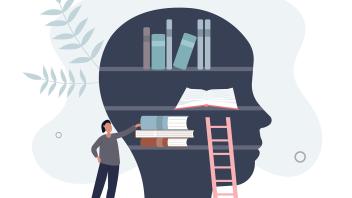Reading problems, which are rampant in America, can greatly hinder a person’s life. Scientific research, however, is now providing insights on how to prevent the development of poor reading and all the problems that come with it. Some of the latest work cites evidence suggesting that certain reading instruction regimens can improve the brain function of those with reading woes, enabling them to read better.
You open the pamphlet and speedily absorb word after word, line after line. Within 20 minutes, you are well acquainted with the rules of the road and soon after you pass the state’s driving test. Painless.
Then there are those with reading problems. For them, the process can become riddled with roadblocks and detours. In fact, reading problems can harm many areas of life, such as school performance, job opportunities, even your health if you fail to understand a medication’s instructions, for example.
And if you think reading problems are rare, think again. Approximately 37 percent of the nation’s fourth graders cannot read at a basic level, according to the National Center for Education Statistics. Most poor readers never catch up over the years.
But now, accumulating research, including work showing that certain types of reading instruction can aid the brain function and ability of problem readers, provides insights on how to prevent this downfall. The area of study is leading to:
- An improved understanding of how we learn to read and what goes wrong in those with reading problems.
- The clear identification and continued improvement of specific instruction regimens that could help many types of readers.
In past years, numerous studies suggested that certain forms of instruction can help children become good readers, but it was difficult to determine which methods were clearly effective. Then, a panel of experts convened by Congress conducted an extensive review of the research and released a report in 2000 detailing the most successful teaching approaches. They found that effective reading instruction should consist of a combination of methods, including the teaching of phonemic awareness skills, where a child learns to break apart and manipulate the sounds in words, as well as phonics skills, where a child learns that sounds in words are represented by letters of the alphabet that can be blended together to form words.
The report determined that instruction in phonemic awareness significantly improves a child’s reading ability more than instruction that does not teach this skill. The analysis also revealed that instruction in phonics produces significant benefits for students in kindergarten through 6th grade and for children having difficulty learning to read. In addition, teaching methods that help children read fluently and instruction that develops vocabulary and reading comprehension skills were deemed important.
More recently researchers took these findings one step further. They found evidence that suggests that reading instruction that includes training in these areas can help problem readers improve their reading by altering brain function. Based on accumulating research, scientists think that skilled reading requires certain patterns of activity in a network of brain areas, including the inferior frontal gyrus, parieto-temporal area, and occipito-temporal area (see illustration). In the new work, researchers used imaging techniques to examine the activity of these areas in problem readers. Individuals with reading disabilities who participated in instructional programs improved their reading performance and their brain activation patterns started to resemble those of typical readers. Preliminary findings also suggest that related instruction methods can improve skills important for reading and aid the brain function of young children who show signs that they are at risk for developing reading problems as they get older.
Scientists also are teasing apart the differences among those who have difficulty learning to read. An inherited factor may make it harder for some to read, for example. Others may be the product of an environment that did not nurture certain basic skills appropriately in early life. By understanding the differences, researchers could find ways to customize and fine-tune instruction regimens. This type of advance and additional progress in understanding the brain’s role in reading could further improve the effectiveness of instruction techniques, thereby providing more green lights in life for many individuals.
For more information please contact the Public Information Department, Society for Neuroscience, at publicinfo@sfn.org.
